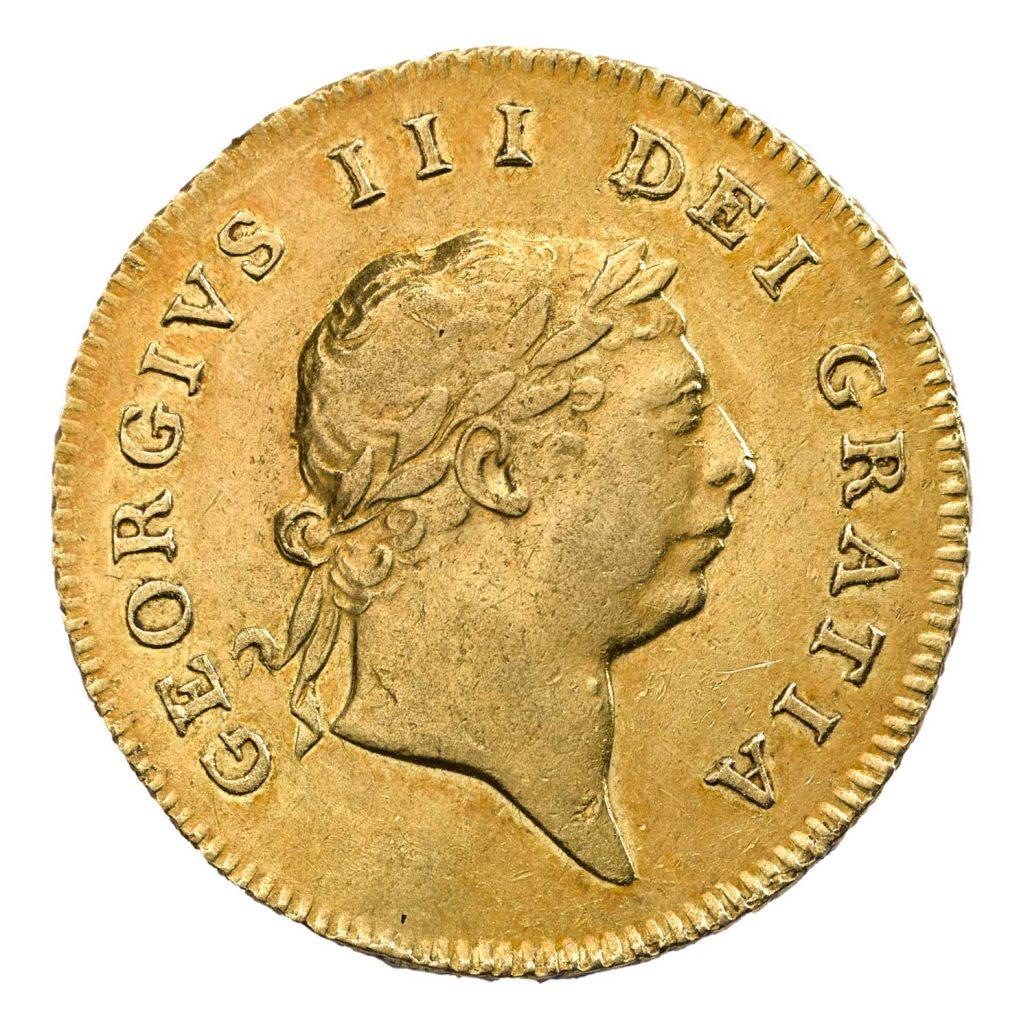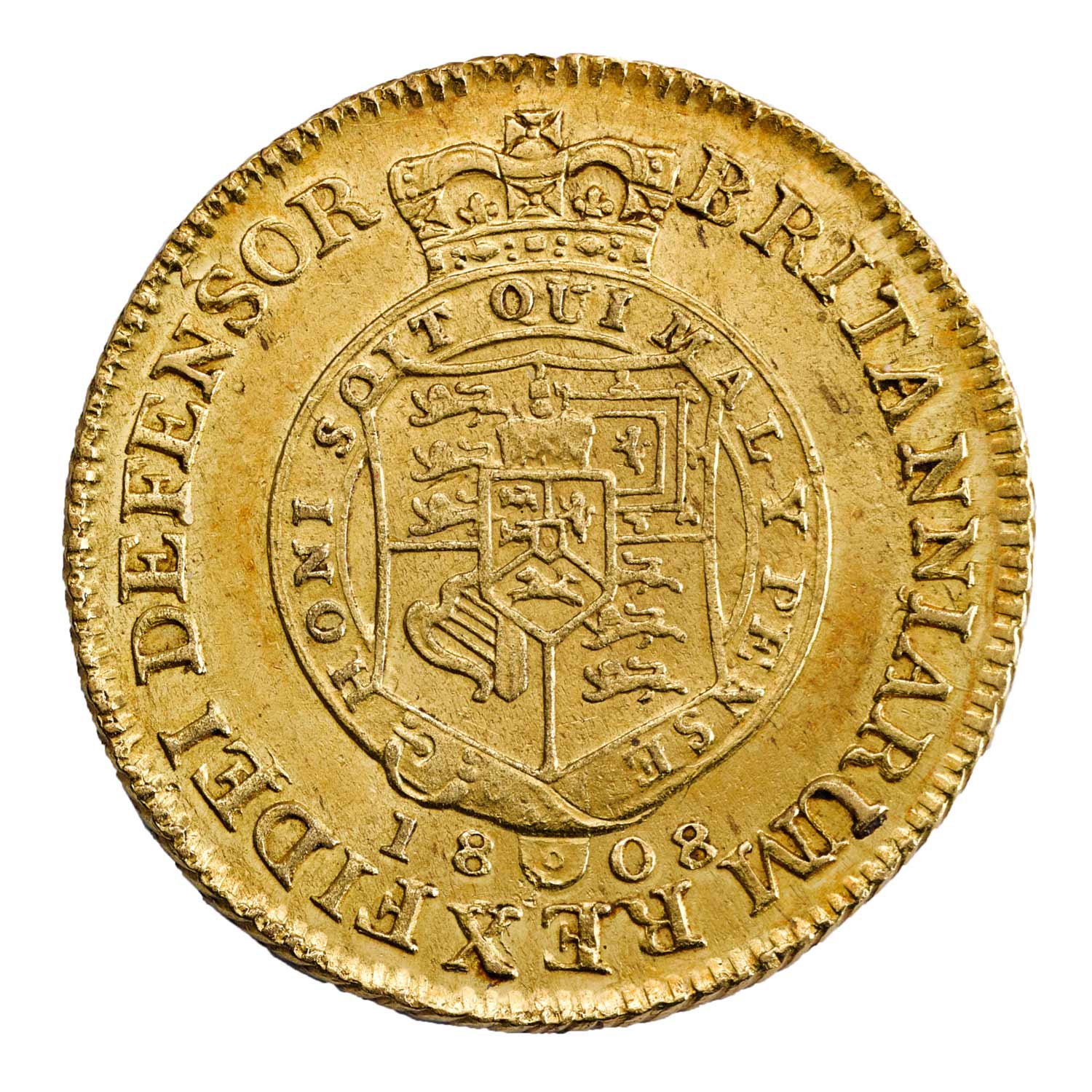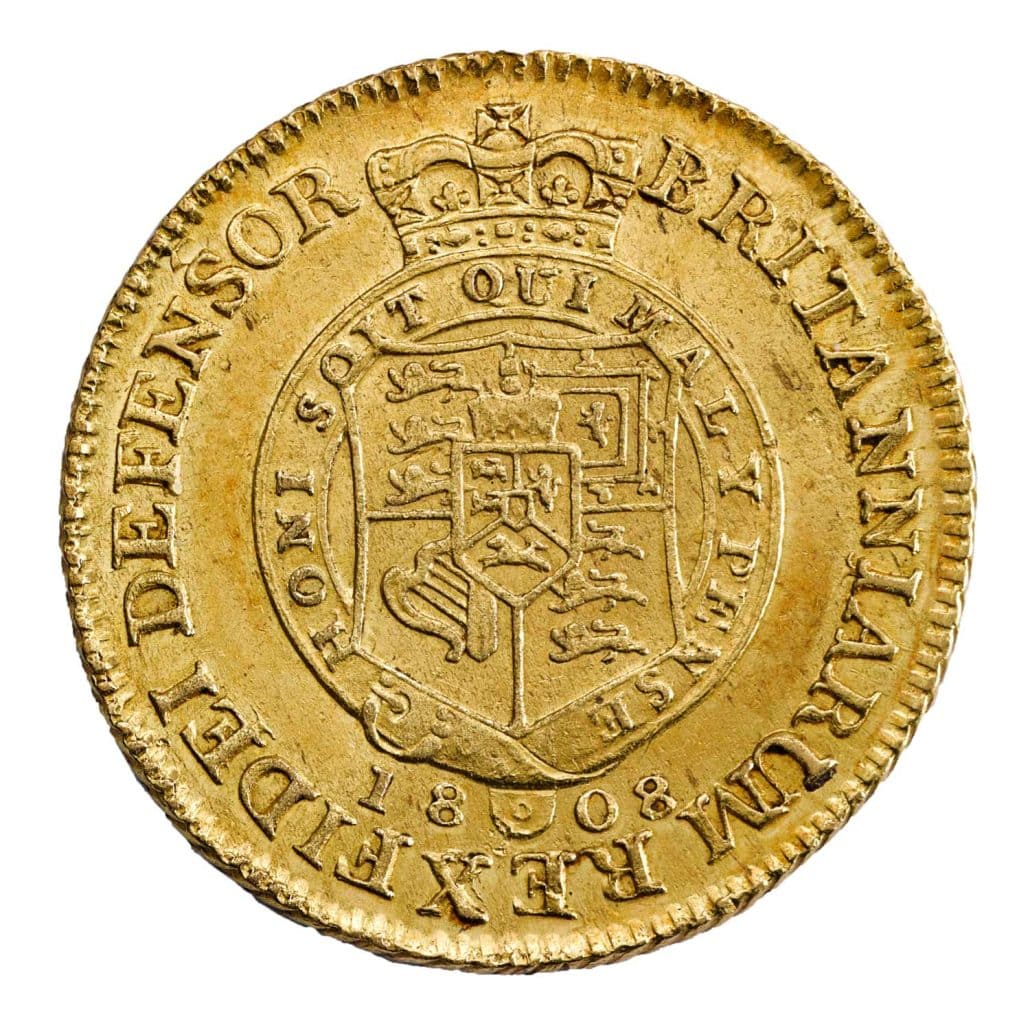The 1804-1808 George III Half Guinea Military Type coins, marking the last iteration of the half guinea in circulation, present an intriguing chapter in the history of old English currency. Bearing the distinctive ‘Military’ portrait and a shield design, these coins encapsulate a significant era of kingdom currency, prompting enthusiasts to explore what is a guinea worth today.
Considering their historical importance and unique features, the article delves into the collectibility and value factors of this guinea coin worth, aiming to guide collectors on how much is a guinea worth and the value of a guinea coin in contemporary times.
The Historical Context of the 1804-1808 George III Half Guinea
The 1804-1808 George III Half Guinea Military Type emerged during a pivotal moment in British numismatic history, marking the twilight years of the guinea’s circulation. Originally introduced in 1669 under Charles II, the half guinea consistently featured across various monarchs’ reigns due to its utility and value. By the time of George III, this coin had been a staple in British currency for over a century, embodying the economic and political shifts of the era.
Evolution of the Half Guinea
- Charles II to Queen Anne: Initiated in 1669, the half guinea was consistently produced during the reigns of Charles II through to Queen Anne, maintaining a standard weight of 4.2 grams and a diameter of 20 millimeters.
- George I to George II: The production continued under George I and George II, albeit with some intermittent years. Notably, the dimensions remained unchanged, underscoring the coin’s stability in British currency.
- George III’s Reign: The coin’s production reached its zenith during George III’s reign, adapting slightly in size from 1787 onwards and finally ceasing in 1816, replaced by the half sovereign in the Great Recoinage.
The half guinea’s consistent production over the centuries highlights its significance in the British economic landscape, particularly during periods of political and economic transformation. The 1804-1808 military type, struck during the Napoleonic Wars, not only faced contemporary forgeries due to metal shortages but also represented the resilience of the British economy during tumultuous times. This period also saw the Royal Mint, established in 886 AD, continue its long-standing tradition of crafting coins that encapsulated the heritage and sovereignty of the nation, a testament to its enduring legacy in coin production.
Features and Design of the George III Half Guinea Military Type
The George III Half Guinea Military Type, minted between 1804 and 1808, showcases a sophisticated design reflective of its era’s technological and artistic advancements. This coin features the distinguished ‘Military’ portrait of King George III on the obverse, designed by Nathaniel Marchant and meticulously engraved by Lewis Pingo. The portrait, a sixth laureate bust of the king, faces right, capturing the regal demeanor and detailed attire representative of the period.
Obverse and Reverse Details
- Obverse Features: The obverse displays the sixth laureate bust of George III facing right. This depiction is notable for its intricate detailing, particularly in the laurel wreath and the regal expression of the king.
- Reverse Features: On the reverse, the coin proudly bears the Shield of the Royal Arms within a garter. The garter encircles the shield and crowns it, bearing the inscription ‘HONI SOIT QUI MAL Y PENSE‘, a motto that translates to “Shame on him who thinks evil of it.”

The chevron-milled edge of the coin enhances grip and serves as a deterrent to clipping, a common practice of shaving off small amounts of precious metal from coin edges. Minters struck the entire coin from 22 Carat Gold, precisely weighing 4.18 grams with a diameter of 20.00mm, highlighting the high standards of minting during King George III’s reign.The design elements and composition of the George III Half Guinea Military Type not only highlight the craftsmanship of the Royal Mint during this historical period but also its role in producing currency that was as functional as it was ornamental.
Collectibility and Value Factors
Grading and Market Availability
Collectors highly seek the 1804-1808 George III Half Guinea Military Type coins because of their historical importance and rarity. The Royal Mint and other reputable grading services like PCGS and NGC usually grade these coins, often labeling them as About Very Fine (AVF) or Very Fine (VF). Currently, these coins are scarce in the market, occasionally going out of stock, which can heighten their appeal among collectors.
Pricing and Rarity
The value of these coins varies significantly based on their condition and rarity. An 1804-1808 George III Half Guinea Military Type commands a value of approximately £930.00, while the 1813 King George III Gold Military Guinea Coin, with a mintage of 80,000, commands a much higher price of £4,750.00. Factors such as low mintage and unique design features significantly influence the rarity of these coins, which in turn plays a crucial role in determining their market value. The coins’ worth, derived from their gold content, underscores their significance, with a bullion value of USD 294.64. This is especially pertinent given the historical fluctuations in gold and silver prices.
Investment and Collectibility Insights
Investors and collectors should consider several factors when assessing the value of these coins. The actual gold content, marked at 0.2461 ounces for the 1804-1808 coins, adds intrinsic value, while the coin’s historical context and rarity index, such as an 85 rating on Numista’s scale, highlight its collectibility. Platforms like eBay serve as popular venues for transactions, providing a real-time glimpse into the coin’s demand and value fluctuations. Collectors are advised to stay informed through coin forums and maintain connections with reputable grading services to ensure authenticity and fair valuation.
How to Determine Authenticity and Value
To ascertain the authenticity of a George III Half Guinea, collectors should start with a meticulous visual inspection. Look for any signs of unusual wear, corrosion, or damage that might indicate tampering or forgery. Authentic coins will exhibit wear consistent with their age and historical usage.
Visual and Physical Inspection
- Magnetic Test: Genuine gold coins, including the George III Half Guinea, will not be attracted to a magnet. Performing this simple test can quickly rule out counterfeit coins made from ferromagnetic materials.
- Weight and Measurement Verification: An authentic George III Half Guinea should have a precise weight of approximately 4.04 grams and a diameter of about 20.7mm. Deviations from these measurements can be a red flag for collectors.
Professional Assessment and Certification
For a definitive verification, consulting with a numismatic expert or an appraiser is recommended. These professionals can provide a detailed assessment of the coin’s authenticity and its market value. Additionally, obtaining certification from a reputable grading service can further affirm the coin’s authenticity and condition, providing peace of mind and potentially enhancing its marketability.
Collectors interested in purchasing or verifying a George III Half Guinea can also benefit from signing up for notifications from dealers when these rare coins are back in stock, ensuring they do not miss an opportunity to acquire or authenticate a potentially valuable piece.
Conclusion
Through the exploration of the 1804-1808 George III Half Guinea Military Type, we have delved into its historical context, emphasizing its importance in British numismatic history and its evolution over the years. The discussion illuminated the rarity, design intricacies, and collectibility factors that contribute to the coin’s value today. The careful balance between historical significance and the rarity of these coins underscores their appeal to both collectors and investors, making them a captivating subject within the numismatic community.
As we consider the implications of these findings, it becomes evident that the George III Half Guinea represents more than just a piece of currency; it embodies a rich tapestry of history, artistry, and economic shifts. For collectors, the coin offers a tangible connection to Britain’s past, while for investors, it presents an opportunity to own a piece of numismatic rarity. Further research and vigilance in authentication remain paramount for those looking to delve into the world of these historical coins, ensuring their preservation and appreciation for generations to come.


